How beautiful to plant flowers in the country - the rules for combining and decorating flower beds
A huge variety of flower crops allows you to create amazing colorful compositions even in a small garden area. Forming different types flower beds you can reproduce any pictures or figures, divide the site into different zones, make beautiful hedges and much more. Observing the basic rules for combining plants, even novice gardeners can grow many types of flower beds.
Content:
- Rules for decorating flower beds in the country
- Combinations of perennial and annual flowers
- Color combinations
- Height location
- Simple flower beds
- Intricate flower beds
Rules for decorating flower beds in the country
It would seem that it is easier - to plant flowers and rejoice, but to get a flower garden that gives real pleasure, it turns out, there are certain rules:
- When planting ornamental plants - the integrity of the picture. All flowers should look like a single whole, and not be scattered around the site in a chaotic manner. If it is not possible to do this throughout the entire site, you can first refine a small area.
- Plants are arranged according to the principle of tiers, that is, tall plants should not cover low ones.
- Think over the composition (architecture) of the flower garden in advance. To do this, it will be useful to first draw a plan for the location of plants on paper, taking into account the timing flowering each flower. It is best to use colored pencils when creating the plan, this will help to achieve the optimal combination of colors.
When preparing a composition, it is important to consider the following points:
- A combination of different shades, sizes and shapes of plant leaves. Determine the main colors of your flower bed, these are usually yellow, red, orange, pink shades. You can choose purple or blue as the background.
- Plant care needs: watering, lighting, space required for growth (planting density).
- Period flowering - properly selected plants with a long flowering period will delight you until late autumn.
- Using a curb - Without a doubt, edging greatly improves the appearance of the flower bed, so you can use stones, bricks or undersized plants as the border of the flower garden.
Combinations of perennial and annual flowers
Combining annuals and perennial plants can get a very beautiful decorative flower bed. The correct selection of flowers will allow you to enjoy the sight of flowering plants from the very spring to the beginning of autumn frosts.
Growing perennial flowers has its advantages:
- They are planted once every few years.
- They are unpretentious in care.
- The vast majority of perennials are frost-resistant.
- The number of flowers increases every year.
- Easy to grow from seed (from self-assembled or purchased from a store).
Perennial plants are grown separately or as part of mixed flower beds.Choose plants so that some plants bloom in the spring, following in turn. Since perennials need to be planted at a distance from each other (so that they do not intertwine during growth), the empty spaces between flowers can be filled with annuals, for example, tapeworms.
Color combinations
To achieve the most successful combination of shades of flowering plants in a flower bed, it is worth getting an initial idea of the color wheel. The color wheel is a circle that contains the primary colors yellow, red, and blue. As a result of mixing these colors, you get others: green, purple, orange, etc.
The colors that are next to each other are compatible.
When creating a flower bed, it is important to follow several rules for the selection of colors:
- To create a bright, eye-catching flower garden, contrasting colors are used: red with green, yellow with purple or blue. It is important to plant plants in large groups, otherwise from afar it will look like a dirty blurry spot of an incomprehensible color. It is undesirable to arrange such flower beds in a recreation area, since bright colors are too exciting and tiring.
- For a recreation area, a combination of closely spaced shades is well suited: blue harmonizes well with purple and lilac.
- When forming a flower garden, you can use the rule of triads: an isosceles triangle is drawn in the color wheel, and when creating a composition, only those colors are used that are at its vertices: for example, blue - red - yellow.
- Gray, white and black colors can be combined with any shades. White color well dilutes bright and variegated plants, black, on the contrary, emphasizes the shades, and plants with grayish foliage serve as a good background for a flower garden.
- Plants in pastel shades that look great in any combination will help reproduce the sublime, dreamy atmosphere on the site.
- You can form a flower bed from flowers of the same color, but in different shades. This combination gives volume to the flower garden.
- Warm tones (red, orange, yellow) visually reduce the space, while cold ones (blue, purple) increase it. Cold colors can be used as a background for warm ones, the main thing is to observe the measure.
- There are many varieties of deciduous plants with beautiful leaves in various colors ranging from gray to burgundy. They can be used to decorate flower beds before and after flowering.
Height location
When decorating a flower bed, it is important to correctly arrange undersized and tall flowers. Ground cover and low-growing plants are planted in the foreground, framing tall and medium-sized ones.
Tall perennials can be grown in separate groups or as a background in mixed beds.
These are such plants as aster, stock-rose, lupine, popular among gardeners, meadowsweet, delphinium. They can be placed along tall buildings, gazebos or fences. For single landings, the most suitable mallow, castor oil plant, comb celosia, and for backgrounds in compositions - cochia, ornamental corn.
Medium-sized look very impressive in compositions. peonies, turkish carnation, cornflowers. Poppies, snapdragons, verbena, salvia and balsam... Low-growing flowers can be grown as an element of the composition or form independent flower beds from them. From such crops, colorful carpets can be created, filling the vacant areas between tall plants.
Simple flower beds
Simple flower beds are made flat in the form of a geometric shape, more often a circle or rectangle. You can create flower beds in the form of an oval, rhombus or any polygon.
When forming a simple flower bed, it is important to consider that when planting from seed in the first year, only annual plants will bloom, and then some bloom only after 13-15 weeks. Therefore, it is more convenient to plant many flowers through seedlings.
Usually, simple flower beds are not made large, as large flower beds are more difficult to care for.
Flower beds are often made from 3 to 6 meters in diameter. Make a small mound of soil, the flower bed should rise and be visible. A round or oval flower bed can be given with a rope, the sides of rectangles or polygons are measured with a ruler. In order to separate the flower beds from the lawn and protect them from overgrowing with grass from the garden, they are fenced with bumpers or decorative gravel poured onto a black film.
The simplest type of flower bed is a mono flower, when one type of flowers is planted in a flower garden. This is the most suitable option for beginner gardeners. You can plant different varieties of the same plant, differing in shape and color. The main thing is that the contrast is not too strong.
The most elementary type of island flower bed can be attributed to the type of a simple flower bed, to make it as easy as shelling pears:
- Mark an area with a diameter of about 2.5 meters.
- Place a boulder in the center.
- Plant several bushes of peonies or low-growing irises of different shades around the boulder, or 10 pieces zinnium.
The so-called irregular flower beds are ideal for beginner gardeners. Such flower beds do not have to be planted in a strictly defined shape or size, flowers can be planted in different heights, observing only the rules for the location and combination of colors. You can pick up plants that bloom at the same time or in turn.
Intricate flower beds
Complex flower beds are whole multi-level compositions, for the creation of which they use plants of different heights, as well as natural stone and other decorative elements.
Flower Tips:
- Plants in regular beds are planted in a strictly defined order, in accordance with a clear geometric shape. It is important to maintain symmetry and correctly distribute cultures into groups. All flowers should bloom at the same time, creating a complex pattern. For a summer cottage, such flower beds are not a very good choice, since at the end of flowering, the flower bed will need to be updated.
- Tall plants are planted in the center of the composition (phloxes, delphiniums), then medium-sized and at the edges - low flower cultures.
- Arranging an alpine slide requires certain skills and time. When creating it, stones of different sizes, large crushed stone, sand and pebbles are used. The flowers are surrounded by decorative moss, which is the main element of the slide. To decorate an alpine slide, you can take shrubs and dwarf trees.
- Another type of complex flower bed is cascading flower beds. Flowers are planted in open stands and plastic, stone, pipes of various diameters and other materials. The stands are placed near the walls of buildings or terraces.
- One of the most difficult options is carpet beds. This type of flower garden requires a lot of space, so it will not work for small summer cottages. In addition, the gardener must have sufficient experience to correctly select the plants and patterns. To create patterns of carpet beds, dwarf crops are often used, the more there are, the more colorful the pattern will turn out. It is important to draw a pattern in advance and plant the plants in strict accordance with the plan, filling every centimeter of the site.
- Vertical flower beds, unlike carpet beds, do not need a lot of space. Here, too, considerable experience will be required, since it is important to think over not only the flower arrangement, but also the frame on which it will be held. But in the design, you can realize any fantasies: create volumetric figures of any shape, make a partition from a flower arrangement or replace a part of the wall with it.
- The most difficult option for professionals is arabesque. These flower beds are real pictures of flowers.It can be images of animals, insects, a large flower, a logo.
The creation of three-dimensional paintings is considered the highest degree of professionalism. When creating such flower beds, it is important to take into account absolutely all the rules for the formation of flower beds: a combination of flowers, shape, duration and beginning of flowering, the ability of plants to coexist with each other, proper care for each species and many others.
More information can be found in the video.






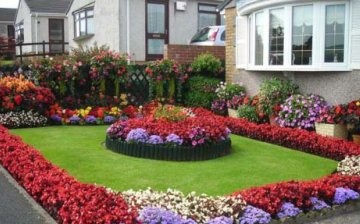

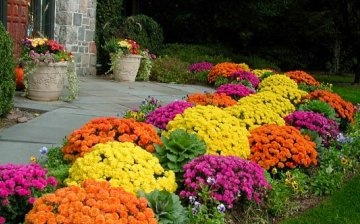
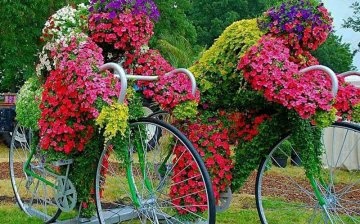







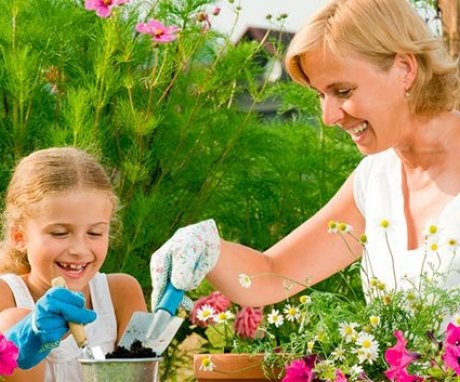
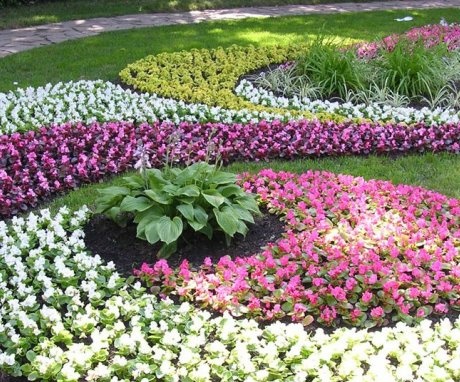

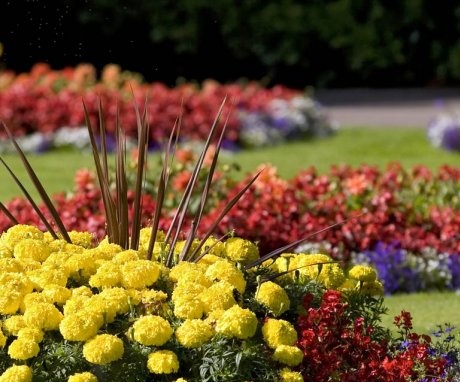
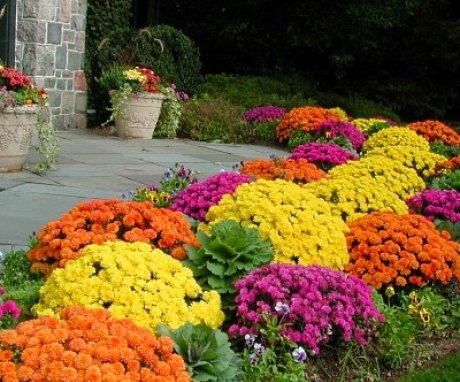

Very interested in the options for vertical landing. Previously, she owned only the beautiful decoration of the stairs leading to the second floor of the house. Everything is classic - high stands, and in them, in turn, pots with beauty. Let's start exploring, getting ready for summer and chic landscaping!